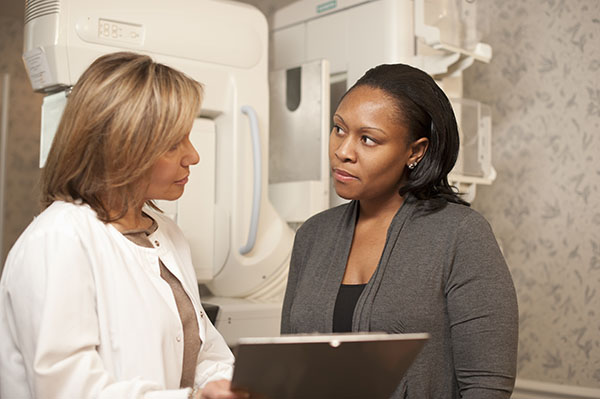From awareness to action: The importance of a breast cancer risk assessment
April 8, 2024Categories: Blog Posts
Tags: Cancer
 No woman or man ever wants to hear the words “you have breast cancer.” But annually, more than 310,000 people receive this diagnosis, according to the American Cancer Society.
No woman or man ever wants to hear the words “you have breast cancer.” But annually, more than 310,000 people receive this diagnosis, according to the American Cancer Society.
Actress Olivia Munn and ESPN anchor Hannah Storm’s recent breast cancer diagnoses shone a brighter light on the need for more than annual screening mammograms for some women. Pairing this diagnostic tool with a breast cancer risk assessment, typically carried out by a woman’s health provider, will paint a clearer picture of your lifetime risk of developing the disease.
Munn’s story is one that most of us are now familiar with. At her annual gynecologic appointment, Munn’s provider calculated her lifetime breast cancer risk and found that she was at high risk for breast cancer. Subsequent supplemental imaging studies found a more aggressive type of breast cancer called Luminal B. Munn ultimately underwent a double mastectomy.
About a week after Munn shared her breast cancer story, Storm found the courage to speak up about her diagnosis of one of the earliest forms of breast cancer. Storm had no predispositions indicating a high risk for breast cancer. Additional testing was recommended following her annual screening mammogram, which revealed her cancer.
Breast cancer is the most commonly diagnosed cancer in American women and the second-leading cause of cancer deaths. About 1 in 8 women will be diagnosed with breast cancer and most do not have a family history of the disease. Trinity Health Mid-Atlantic breast surgeons, Russell Reisner, MD, and Kristin Krupa, MD, share insights into the importance of a breast risk assessment and annual screenings.
What is a breast cancer risk assessment and why is it important?
A breast cancer risk assessment is a tool that calculates a person’s likelihood of developing breast cancer over five years as well as their lifetime. Tyrer-Cuzick and the Gail Model are the most commonly used breast cancer risk assessment tools.
“Some breast cancer risk assessments include a review of a woman’s medical and reproductive history such as age, height, weight, breast density, age during their first menstrual cycle and the birth of their first child, menopausal status and age at menopause,” Dr. Krupa says. “Family history of cancer is important, and it is essential to know which relative, the type of cancer, and their age at the time of diagnosis.”
Breast cancer is treatable if found early. Risk assessments can help identify patients who are at an elevated risk of developing breast cancer and who may benefit from additional testing or beginning treatment earlier.
Is there a recommended age to schedule a breast cancer risk assessment?
“We recommend discussing your medical and reproductive history with a medical provider to better determine when to have a breast cancer risk assessment,” Dr. Krupa says.
What are some of the next steps for a person considered high risk?
- Imaging: Additional screenings such as breast MRI, breast ultrasound and/or a clinical breast exam every six months may be recommended.
- Genetic testing: Assessing if there are any mutations in the genes that could increase the risk of future cancer(s) may be recommended.
- Chemoprevention: Medication that decreases estrogen levels and potentially can decrease the development of a future breast cancer by 50%.
- Risk-reducing surgery: “Complete removal of both breasts (bilateral mastectomies) may be recommended and will significantly lower the risk of breast cancer in the future,” Dr. Reisner says. “Generally, this is reserved for women found to be at significantly high risk.”
What are some lifestyle modifications that can reduce a person’s risk for breast cancer?
- Eating a healthy diet
- Aiming for 150 minutes of moderate exercise per week
- Consuming in alcohol in moderation (no more than three alcoholic drinks per week)
What are the recommendations for women at low risk of breast cancer and who have no prior predispositions?
“It is recommended that women with no predispositions for breast cancer and who are at least 40 years old schedule an annual screening mammogram,” Dr. Krupa says. “With the guidance of a provider, an additional screening breast ultrasound—more common in patients with dense breasts—may be recommended for some women.”
In the United States, not all insurance companies cover supplemental screening. It depends on the laws in your state. “However, in Pennsylvania, a law requires insurance coverage (subject to copay/deductible) for supplemental screening in women who have extremely dense breast tissue if she is found to be at high risk for developing breast cancer,” Dr. Reisner adds.
Find out more about breast cancer screenings, risk assessments and treatment at St. Mary Medical Center or schedule an appointment.
